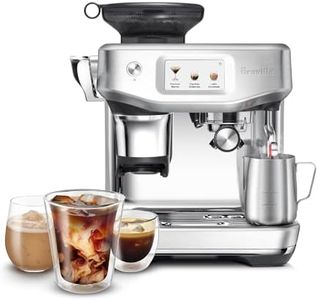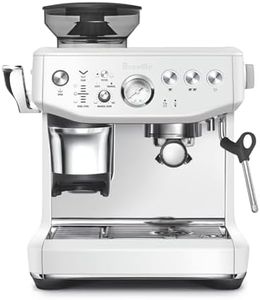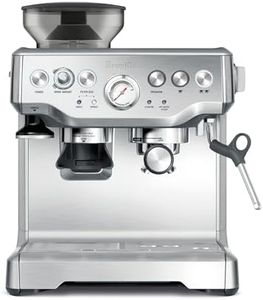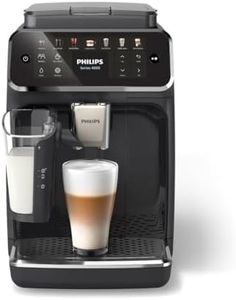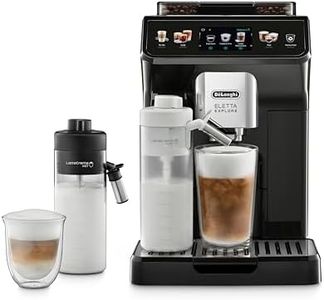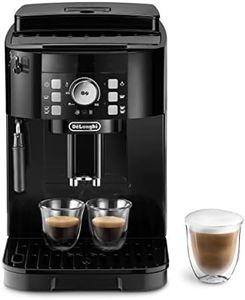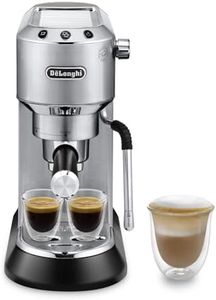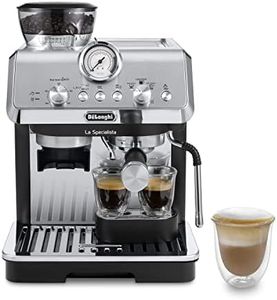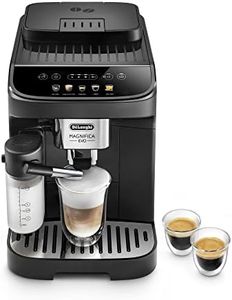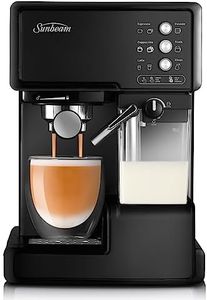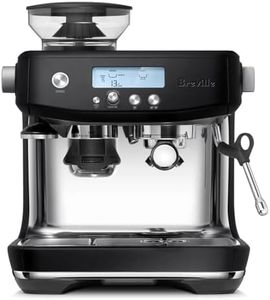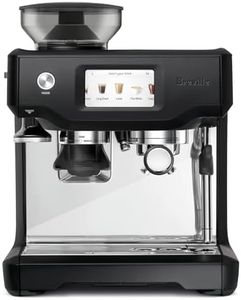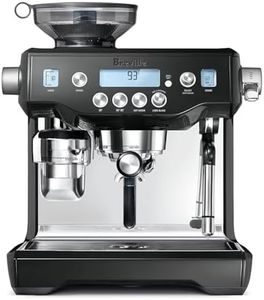We Use CookiesWe use cookies to enhance the security, performance,
functionality and for analytical and promotional activities. By continuing to browse this site you
are agreeing to our privacy policy
10 Best Commercial Espresso Machines
From leading brands and best sellers available on the web.By clicking on a link to a third party's website, log data is shared with that third party.
Buying Guide for the Best Commercial Espresso Machines
Choosing a commercial espresso machine can seem overwhelming, but understanding the key features will make the process much simpler. Your main goal is to match the machine’s abilities to your shop’s expected volume, barista skill level, and menu variety. By evaluating the right specifications, you’ll ensure your machine consistently delivers the quality and efficiency your business needs.Boiler Type and CapacityThe boiler in an espresso machine heats and stores water for brewing and steaming. This is important because the boiler capacity and design directly affect how many drinks you can make at once and how consistent the temperature and pressure will be, both of which are crucial for taste and efficiency. Boilers come in single, dual, and multi-boiler types. Single boilers are simple and best for lower volumes or one-task operations. Dual boilers can brew espresso and steam milk at the same time, making them ideal for busier situations. Multiple boilers allow even more drinks to be made simultaneously, suiting very high-volume environments. To pick the right option, consider how many drinks you expect to serve at peak times and whether you need to brew and steam at the same time.
Number of Group HeadsGroup heads are the parts of the machine where espresso is extracted. The more group heads, the more baristas can work at once and the higher the output, especially important during busy periods. Machines typically come with one, two, three, or four group heads. A single group is enough for very low-volume settings, two is standard for most small to medium cafes, and three or four are best for large coffee shops or environments with consistently high demand. Your expected customer flow and number of baristas working should guide your decision.
Automation Level (Manual, Semi-Automatic, Automatic, Super-Automatic)This spec refers to how much the machine does on its own versus how much control the barista has. Manual and semi-automatic machines let the barista decide how long to extract espresso, offering control and a hands-on experience at the cost of needing skilled staff. Automatic machines control the amount of water for each shot, which means more consistency and less training required. Super-automatic machines do everything from grinding beans to frothing milk, making them very easy to use but with the least amount of customization. Choose higher automation if you have less experienced staff or prioritize speed, or go for more manual if you want to showcase barista skill and have time for training.
Built-In GrinderSome commercial espresso machines include a built-in grinder, while others require a separate grinder. A quality grinder is essential for consistent extraction and taste, as freshly ground coffee is superior in flavor. An integrated grinder saves space and ensures beans are ground moments before brewing, but separate grinders can offer more flexibility and are easier to upgrade. Base your choice on your available counter space, desire for all-in-one convenience, and how much control you want over your grind size.
Steam Wand DesignThe steam wand is used to froth and steam milk, crucial for cappuccinos and lattes. The power, swivel range, and number of steam wands will determine how easy it is to make milk-based drinks quickly and well. More powerful steam wands heat and texture milk faster, and machines with multiple wands allow several baristas to work at once. If you expect to make a lot of milk drinks, prioritize easy-to-use, robust steam wands. For high volume shops, having more than one steam wand can be a big advantage.
Plumbed vs. Pour-Over Water SupplyCommercial espresso machines either connect directly to a water line (plumbed) or use a tank you refill manually (pour-over). Plumbed machines allow for continuous operation without refilling, which is ideal for busy shops, while pour-over may suit catering or situations without plumbing access. Choose plumbed for a stationary, high-output coffee shop and pour-over if you need mobility or if plumbing installation isn’t possible.
Temperature Stability and ControlTemperature stability means the machine keeps the water at a precise temperature from shot to shot, which is essential because small temperature changes can affect espresso taste and quality. Some machines also allow you to program distinct temperatures for each group head. If you want consistent, high-quality shots or need to serve coffee blends that extract best at specific temperatures, prioritize stable and adjustable temperature settings. This is especially important for specialty coffee shops.
Maintenance and Cleaning FeaturesRegular maintenance keeps your machine running smoothly and your drinks tasting great. Features that make cleaning easier—such as automatic cleaning cycles, accessible group heads, and removable drip trays—can save a lot of time. Machines with indicators or alerts for maintenance needs are especially useful in busy environments. When selecting, think about how much time your staff can dedicate to cleaning and maintenance and whether automated cleaning would fit your operations better.
